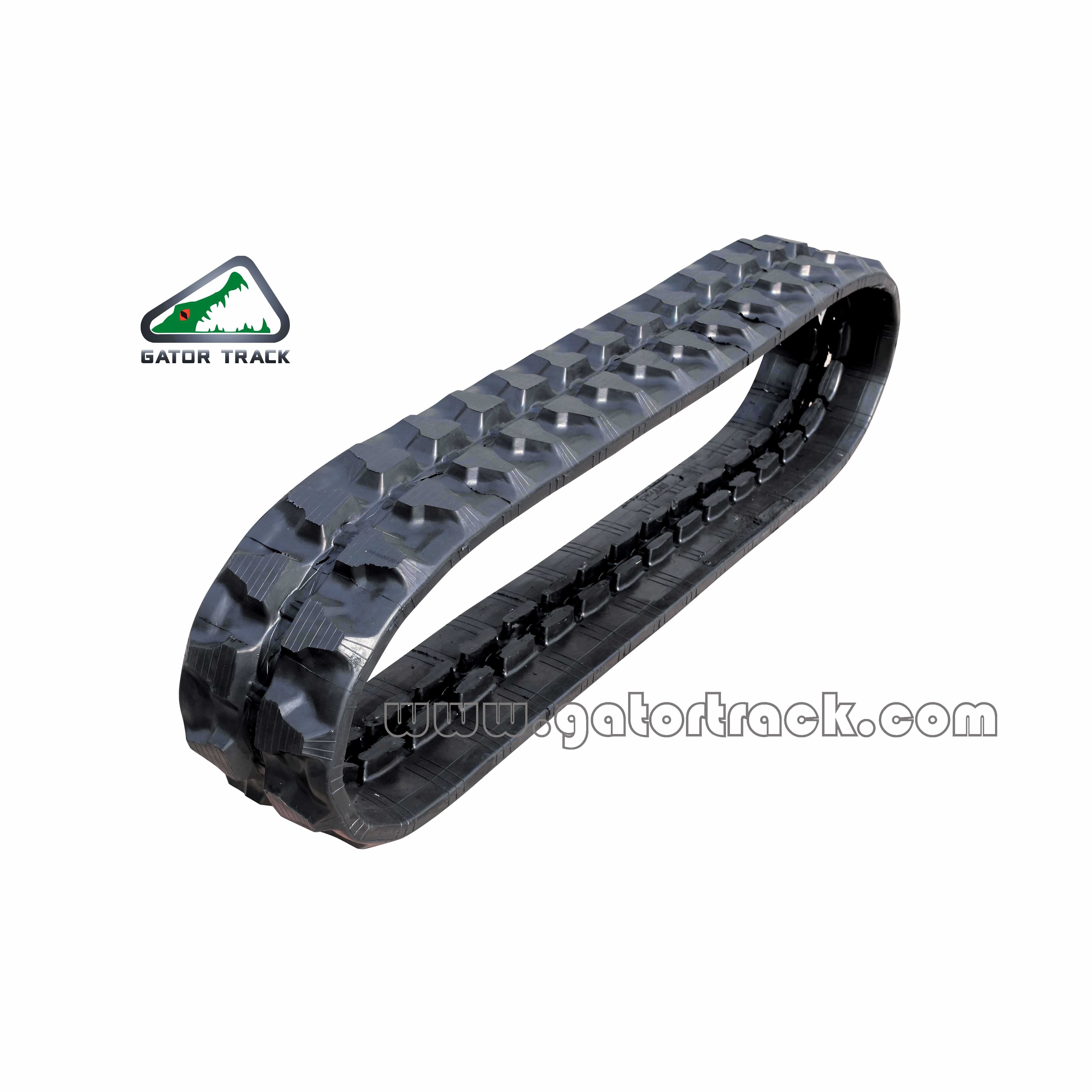Skid steer loaders offer exceptional versatility and flexibility, making them an indispensable tool in a variety of industries. However, in order to maximize their performance and efficiency, it is crucial to equip them with the right tracks. In this blog, we’ll look at the different types of tracks available for skid steer loaders, focusing specifically on rubber tracks.

Rubber excavator tracks vs. Traditional Tires:
When considering tracks for your skid steer loader, you usually need to choose between rubber tracks and traditional tires. While traditional tires are common, rubber tracks are popular for their many advantages. Rubber tracks provide better traction, reduce surface damage, enhance load-carrying capacity, and improve maneuverability.
Advantages of rubber tracks for skid loader:
1. Enhanced stability and traction: Rubber tracks provide excellent traction, especially on challenging terrain. They provide increased stability, allowing operators to operate with confidence even in uneven or slippery conditions.
2. Reduce surface damage: Unlike traditional tires, rubber tracks exert less ground pressure, minimizing the chance of surface damage. This is especially important when working on delicate surfaces such as lawns, sidewalks, or indoor spaces.
3. Increased load capacity: The wider footprint of rubber tracks evenly distributes the load over a larger surface area, thereby increasing the load-carrying capacity of the skid steer loader. This is especially valuable when lifting heavy objects or working on unstable ground.
4. Improved Versatility: Rubber tracks enable skid steer loaders to navigate tight spaces with ease thanks to their smooth and precise maneuverability. Their grip and flexibility enable operators to complete tasks efficiently in limited areas.
Choose the right rubber tracks:
When choosing the right rubber tracks for your skid steer loader, you must consider the following factors:
1. Application: Determine the primary use of the skid steer loader. Will it be used for landscaping, construction, or agriculture? Different tracks are optimized for specific applications and must be selected accordingly.
2. Quality: Use high-quality rubber tracks to ensure durability and service life. Cheaper alternatives may seem tempting, but they often come with compromises in performance and longevity.
3. Size and configuration: Consider the weight and size of your skid steer loader and choose a track that meets its specifications. Proper sizing ensures optimal performance and longevity of your track system.
In short:
Choosing the right track for skid steer loaders is critical to maximizing its potential. Rubber tracks offer many advantages over traditional tires, including better traction, reduced surface damage, increased load capacity and improved maneuverability. By considering track application, quality and size/configuration, you can ensure your skid steer loader performs optimally, no matter the terrain or task at hand.
Post time: Oct-07-2023
